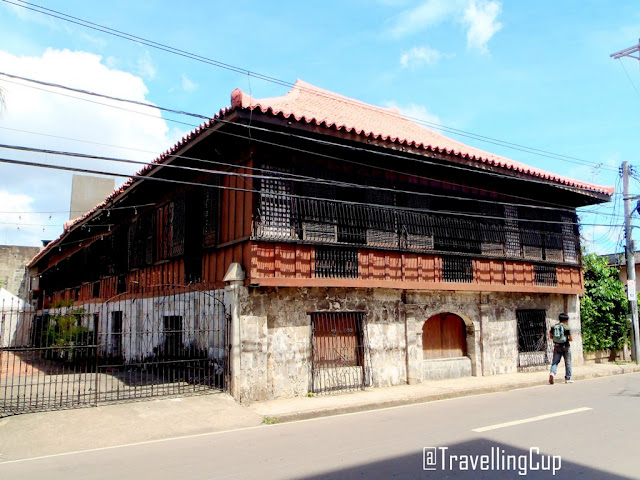This was my seventh destination in Going Back to the History of Cebu
When I am done with Yap-Sandiego Ancestral House this house was my next destination. There's a huge difference between this two heritage houses in terms of it's architectural structure. This Gorordo House shows how a prominent family lived during their generations. From the floor, artistic walls, windows up to the roof top - it's really gorgeous.
At the main entrance of this house, it's historical background was written and here's what it says: "This house was built in the mid-19th century by Alejandro Reynes y Rosales and was bought by Juan Isidro de Gorordo, a spanish merchant, in 1863. Four generations of the Gorordo family lived in this house, including Juan Gorordo, first Filipino Bishop of Cebu, 1910-1932.
Acquired in 1980 by the Ramon Aboitiz Foundation Inc. It was restored and later opened as a public Museum. Casa Gorordo has been declared a National Historical Landmark by Virtue of National Historical Institute Board Resolution No. 4, dated September 24, 1991." - courtesy of Casa Horordo Museum
The Guest Room - this room features a four-post bed with a canopy, an old aparador (closet), an armario (pillow rack) and lavador with porcelain basin. The guest room was rarely unoccupied as, like other Filipino families, the Gorordos regularly hosted friends and relatives. - courtesy of Casa Horordo Museum
 |
| Photos above and below were taken at the Kitchen |
 |
| Photos above and below were taken at the Banyo |
A bathroom or baño within the house is a luxury only for few families enjoyed in the 1800s and early 1900. Same as the common detached baños or the tine, however, those in opulent households had open roof. This allowed daylight and sometimes, rainwater into the bathroom. Until the second decade of the twentieth century, water was brought upstairs by servants and stored in big ceramic jars. The tub was used mainly by women and children. - courtesy of Casa Horordo Museum
The azotea served many purposes. In daytime, it was used for washing, drying and ironing clothes. The cool breeze in the late afternoons and evenings made it an ideal place for relaxation, meriendas and intimate gatherings for friends and family. The large martavan jars are both functional and decorative. They are constantly filled with water to cool the breeze that enters the windows. The whole terrace is shaded by two flowering vines; the yellow bells and the bridal bouquet, the latter being almost as old as the house. - courtesy of Casa Horordo Museum
After the exit of this heritage site, I took my early lunch nearby. For only 60 pesos, I already had plain rice, soda and the delicious fish. I stayed there for 30 minutes then proceeded to Magellan's Cross.
After the exit of this heritage site, I took my early lunch nearby. For only 60 pesos, I already had plain rice, soda and the delicious fish. I stayed there for 30 minutes then proceeded to Magellan's Cross.






